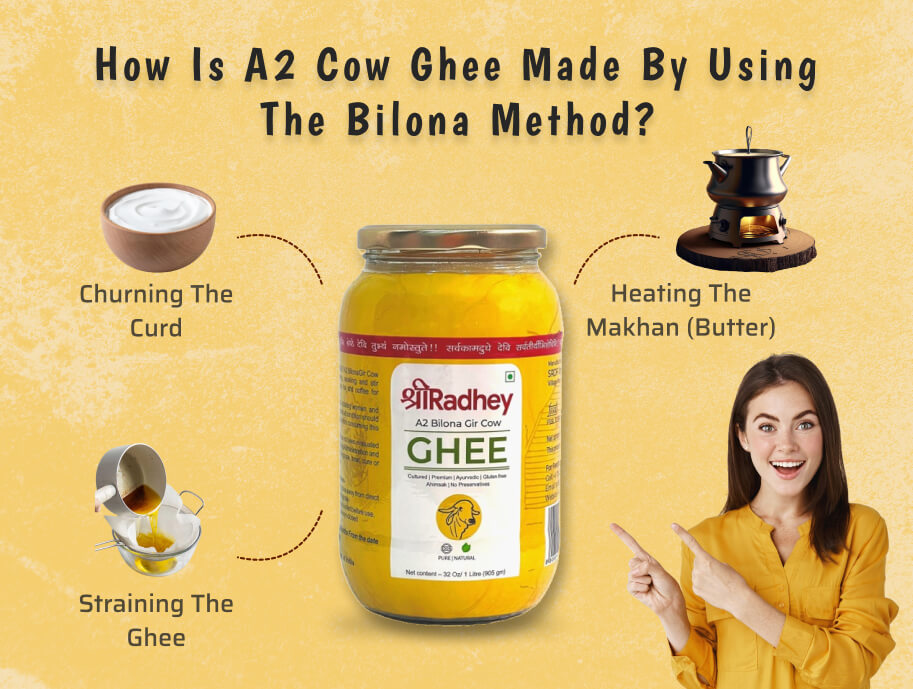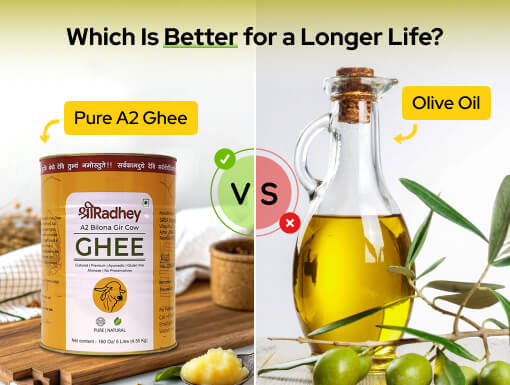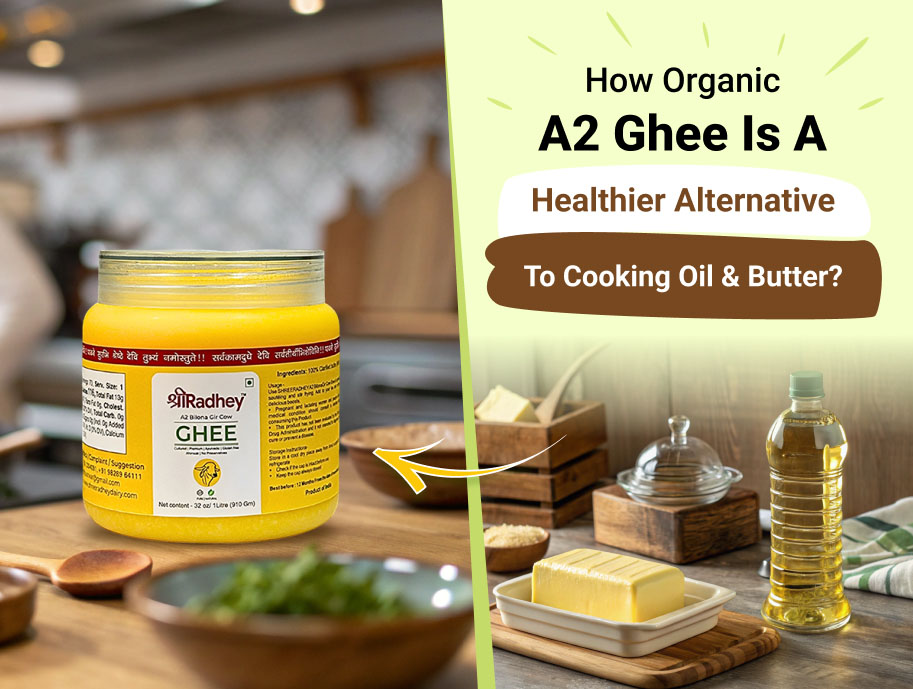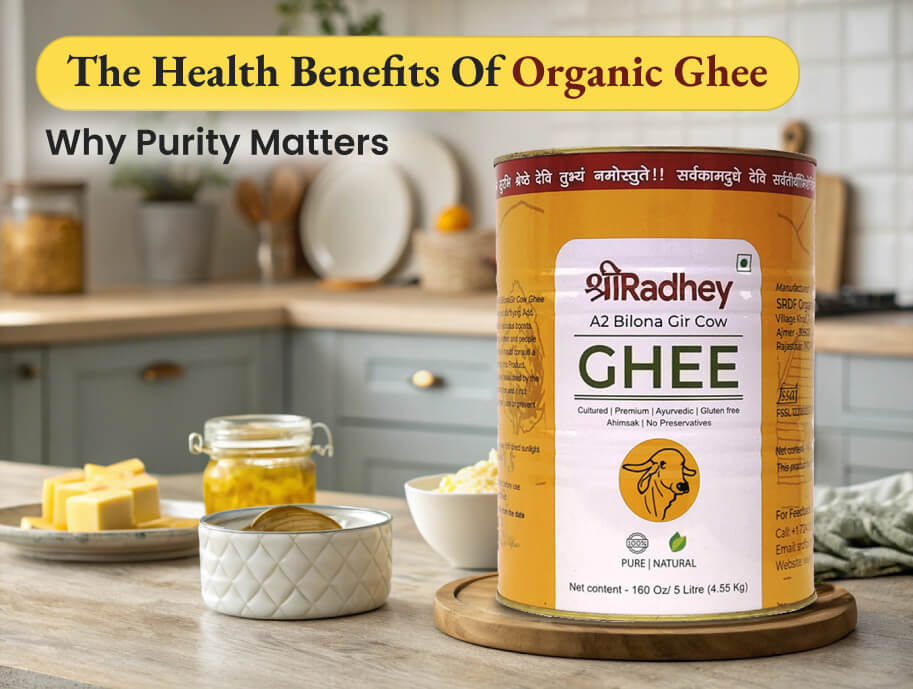No products in the cart.
FREE Shipping all over India. No minimum cart value required

A2 cow ghee is known for its nutritional advantages and unique flavor. It acts as a traditional Indian superfood made from the milk of indigenous gir cows. The purity and way of producing A2 Gir Cow Ghee make it unique, and the Bilona method is the oldest and purest approach.
Let’s discuss the traditional making of A2 cow ghee using this time-honored Bilona method.
Traditional Process of Making A2 Cow Ghee Using the Bilona Method
Sourcing Pure A2 Milk
The bilona ghee process begins with obtaining high-quality A2 milk from indigenous cow breeds like Gir Cows. These cows produce A2 beta-casein protein, which is easier to digest and more beneficial for health than the A1 protein found in hybrid cows.
Read: Reasons behind Promoting Indigenous Gir Cows
Setting the Milk for Curd
Boil the fresh A2 cow milk and let it cool at room temperature. When it’s cooled off, a small amount of yogurt culture or curd is blended into the milk and left alone all night to naturally develop into thick curd. This step is crucial because it sets the essentials for high-quality ghee.
Churning the Curd
In the Bilona process of churning curd, a wooden churner called the Bilona spins the curd gently and methodically. It is often done by hand to churn the butter from buttermilk. By churning slowly, nutrients and milk goodness are preserved.
Extracting Makhan (Butter)
After churning, the fresh, aromatic butter or makhan is collected. This raw butter is what will eventually be transformed into ghee. The buttermilk that remains after this process is also a nutritious by-product, often consumed for its digestive benefits.
Heating the Makhan
The collected butter is heated on a low flame in a thick-bottomed vessel. This slow heating process causes the butter to melt and evaporate the water content. As the butter simmers, it releases milk solids that gradually settle at the bottom of the pan. The fat rises to the top, and this is the pure A2 ghee.
Straining the Ghee
When the clarified ghee is ready and shines gold yellow, it is strained to remove any leftover milk solids. Sweets and parathas are commonly made in Indian houses from the leftover solids known as ghee residue. Click To Learn Why A2 Ghee is Considered an Essential Element in Kitchen?
Why Is the Bilona Method So Special?
The Bilona process ghee is unique as it protects the authenticity and essential nourishment of A2 Cow Ghee. Instead of machines and high temperatures, this approach relies on a traditional technique where the curd is slowly churned by hand to gain butter, which then undergoes low-heat simmering to form ghee. The traditional methods preserve the conservation of vital nutrients, including vitamins and antioxidants. By applying the Bilona method, ghee improves its ease of digestion for lactose-intolerant people. This bilona ghee making process preserves the vibrant flavor and numerous health advantages.




 Pure A2 Ghee vs. Olive Oil: Which Is Better for a Longer Life?
Pure A2 Ghee vs. Olive Oil: Which Is Better for a Longer Life? How Organic A2 Ghee is a Healthier Alternative to Cooking Oil & Butter?
How Organic A2 Ghee is a Healthier Alternative to Cooking Oil & Butter? The Health Benefits of Organic Ghee: Why Purity Matters
The Health Benefits of Organic Ghee: Why Purity Matters Lactose Intolerance and Organic Ghee: A Safe Choice?
Lactose Intolerance and Organic Ghee: A Safe Choice? How A2 Ghee Supports Joint Health During Cold Weather
How A2 Ghee Supports Joint Health During Cold Weather